Overview & Highlights:
- Discover Marrakech with a private guide.
- Visit Casablanca and Hassan II Mosque, the largest mosque in Africa.
- Explore Rabat; Hassan Tower, Mohammed V Mausoleum and Oudayas Kasbah.
- Visit Meknes and Volubilis, the site of the old Roman ruins.
- Explore the ancient medina of Fes with a private guide.
- See Moroccan Switzerland, the beautiful city of Ifrane.
- Visit the wild monkeys in the cedar forest.
- Enjoy a luxurious drive along Ziz valley, the largest valley in morocco.
- Experience camel trekking in the Sahara desert.
- Spend an unforgettable night in an authentic Berber camp.
- Visit Ouarzazate city, the gate of the Sahara desert and the Hollywood of Africa.
- Discover Aït Ben Haddou Ksar; UNESCO world heritage site.
- Cross the high Atlas Mountains and Tizi-N-Tichka pass (2260m of Altitude).
Itinerary:
Day 1: Arrival – Marrakech.
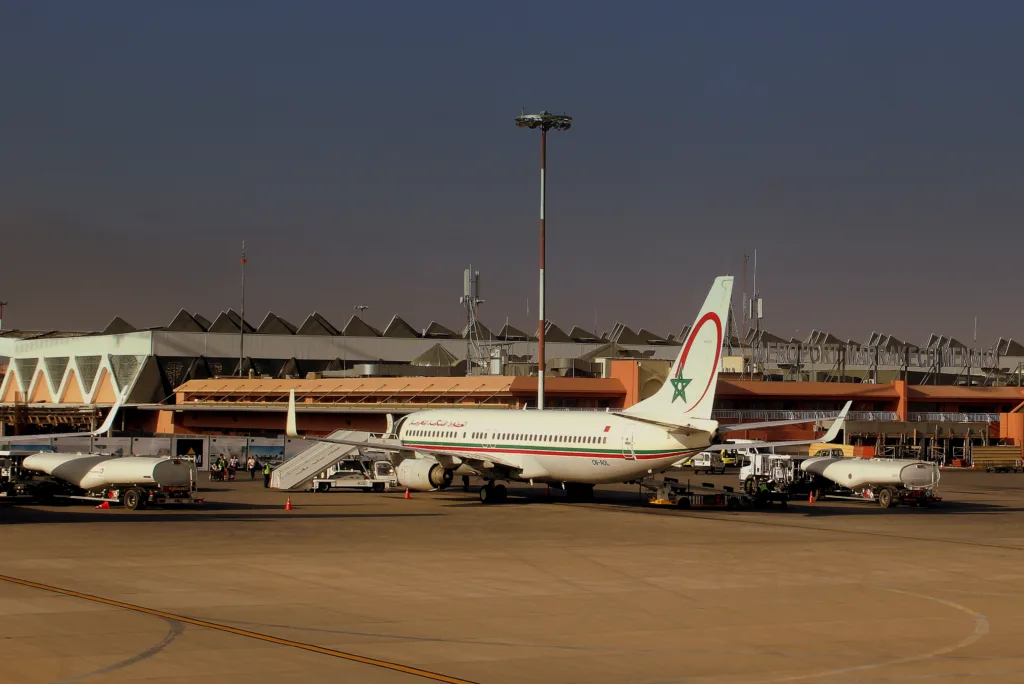
Upon arrival, we will meet you at the airport and head to your accommodation in Marrakech. There you will take time to relax and recover from your journey.
Overnight in Marrakech.
Day 2: Guided tour in Marrakech.
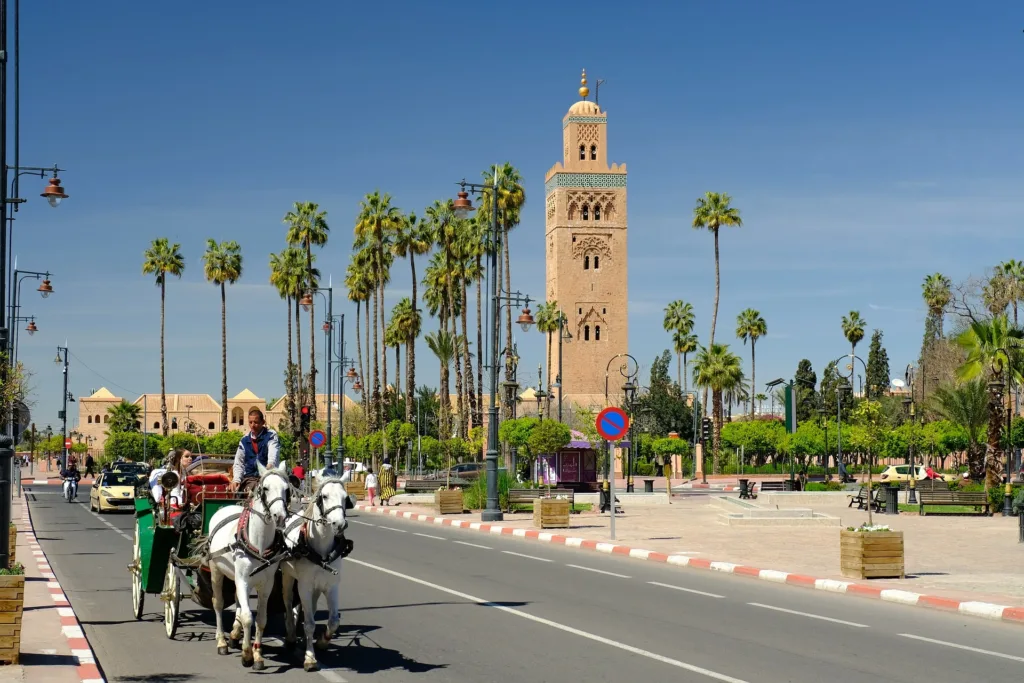
Today, after breakfast you will start your Marrakech tour with a private guide. You will begin with a visit to the Koutoubia minaret, the tallest in Marrakech. Within the city walls, no building is allowed to be taller than the Koutoubia. The minaret is part of the largest mosque in Marrakech, which was completed in 1199.
Then tour the Bahia Palace, a late 19th-century palace built for the grand vizier and named for his favorite wife. The rooms, set in a 2-acre garden, include the rooms which housed his harem, an often political position. From there you will have walk to explore Jemaa el Fna, the primary square in the medina and a UNESCO world heritage site.
Though now filled with street performers, snake charmers, merchants, and orange juice stalls, when it was created in 1050, it was used for public executions, perhaps leading to its name which can be translated as “assembly of death”.
Head into the souks surrounding Jemaa el Fna and make stop at a Berber Apothecary shop, learning of the medicinal uses of many of the common spices and herbs that are still used across Morocco to treat common illnesses. While it’s not as picturesque as the heaps of spices you find in the market, it is far more informative. Then visit the several workshops including shoemakers and bakers. In the afternoon you will enjoy a traditional lunch in the square before going back to your accommodation.
Overnight in Marrakech.
Day 3: Marrakech – Casablanca – Rabat.
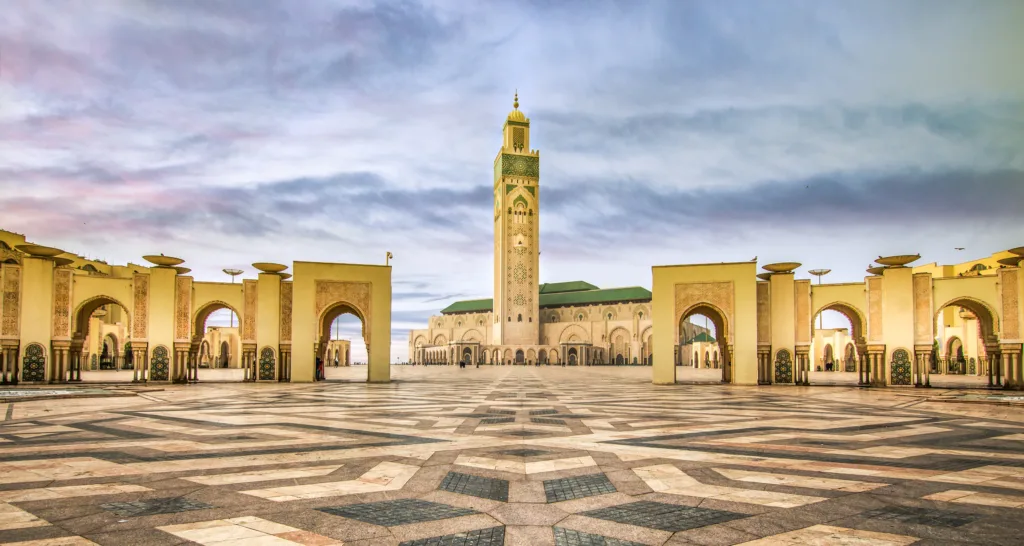
In the morning and after breakfast, we will leave Marrakech and make journey to the coast to explore Casablanca, the economic capital of Morocco, and Rabat its current capital. After around three hours driving to the north west of Marrakech, we will arrive to Casablanca and begin with a visit to the stunning Hassan II Mosque, the largest in Morocco and the third largest mosque in the world that non-Muslims are allowed to enter.
Able to accommodate up to 105,000 people in prayer, this marvel of modern Moroccan architecture is the work of hundreds of expert craftsmen from around the country, many of them donating their work. Then we drive along the Cornish where you can have also walk, at its end there is Morocco Mall, the largest shopping center in Africa which was opened in December 2011, with an impressive marine aquarium that extends through all floors and presents forty fish species.
You can also visit mohamed V plaza and the Rick’s café. Stop for lunch in a restaurant that serves delicious Moroccan food and seafood. Then continue to Rabat, Morocco’s fourth imperial city, where you will visit the Hassan Tower, which has sat unfinished since 1199. Commissioned by Abu Yusuf Yaaqub al-Mansur, the tower was to be the minaret for the largest mosque in the world. Unfortunately, when the sultan passed away in 1199, the project was abandoned, leaving some partial outer walls, 348 columns, and a minaret only standing half-finished at 140 feet rather than the intended 260 feet.
Standing opposite the Hassan Tower is the Mohammed V Mausoleum, which contains the tombs of Mohammed V, the current king’s grandfather, as well as the king’s father, Hassan II, and his uncle, Prince Abdullah. It is considered a masterpiece of Alaouite architecture with its white walls and green tiled roof.
Visit also the Kasbah of the Oudayas, which is a small fortified town area of the city, with white and blue houses, a nice Moorish garden and a breath taking view of the opposite city Sale and the Atlantic Ocean. In the evening drive to your accommodation in Rabat.
Overnight in Rabat.
Day 4: Rabat – Volubilis – Meknes – Fes.
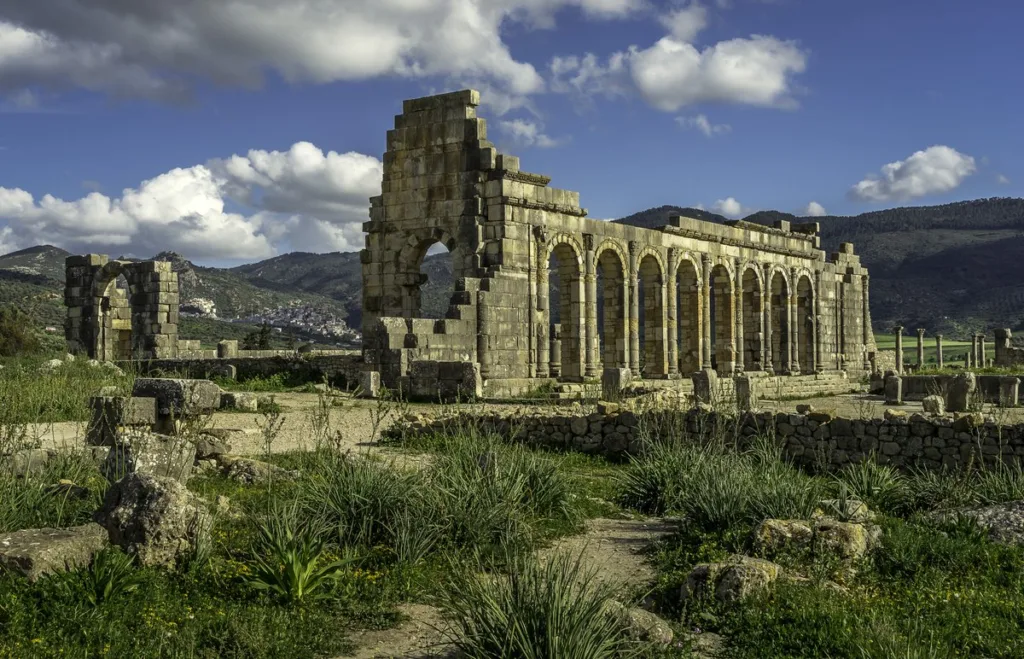
This morning we will travel east to Fes. On the way we will make stop to explore Volubilis the site of the ancient Roman ruins dates back to 3 BCE, when it was the capital of the kingdom of Mauretania. The Roman rule began in the 1st century CE, and continued until it fell to the local Berber tribes in 285 CE.
The remains of many ancient structures are still being excavated, as well as the triumphal arch still standing. There are several large mosaic floors still fully intact, and they will still reveal vibrant colors when wet. Not far from Volubilis you will explore the holy town of Moulay Idriss which is famous for being the site of the tomb of Idriss 1st, the first major Islamic ruler of Morocco, after whom the town is named.
From there the drive continues to Meknes, one of the four Moroccan imperial cities, which was the capital of Morocco from 1672 to 1727 under sultan Moulay Ismail. Where you will be able to tour the city and explore its ancient Medina with its square called “Lhdim”. See Bab Mansour, which was built with marble columns token from nearby Volubilis.
And stop by the Royal Stables, which once held the sultan’s 12,000 horses, each with its own groom and slave to attend to its every need. As well as Visiting the Mausoleum of Moulay Ismail, one of only three active Moroccan shrines that non-Muslims may enter. In spite of his excesses, Moulay Ismail is fondly remembered for bringing peace and prosperity, and driving out Spanish and British forces. In the late afternoon you will head to Fes where you will spend the night in hotel/Riad.
Overnight in Fes.
Day 5: Full day exploring Fes with private guide.
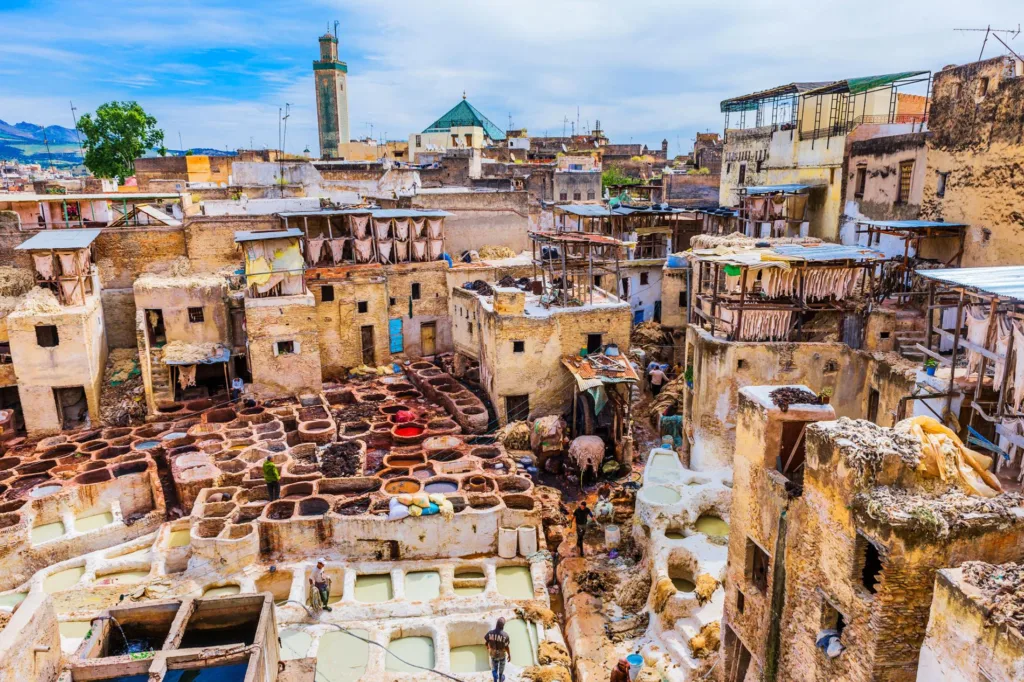
After breakfast in your Riad/Hotel, you will meet your private local guide to explore the different sights of the ancient Medina of Fes. Begin your tour with a visit to the royal palace, with its seven golden doors, and learn about the significance of the intricate decor. Continue and stroll through the Mellah, or Jewish quarter, which was built next to the palace to offer protection.
And then take in the view of the city from Borj Sud, a former fortress and one of the lookouts on a hill where you can see all of Fes laid out, allowing you to spot landmarks otherwise hidden by the skyline-obscuring buildings.
Visit a pottery cooperative to see how they make the unique Fes pottery, as well as handcrafting the intricate mosaics adorning half of Morocco. Head into the ancient medina and step into a sort of living museum. The Fes medina is very much a local community that lives and works and goes about daily life in the medina.
Stop by the Al-Quaraouiyine University, the oldest degree-granting university still in operation, have been founded in 859CE by a woman. Visit handicraft workshops, where you will see why Fes is considered the handicraft capital of Morocco.
This can include, among other things, the silk weavers, where beautifully colorful fabrics are woven from silk fibers of the agave plant, and the famous Fes tannery, where they process all manner of animal hides by hand, much as they have for nearly 1000 years. During your tour of the medina, you will stop for lunch in a restaurant that would be very easy to walk right past, but is truly a hidden gem. In the late afternoon you will get back to your accommodation.
Overnight in Fes.
Day 6: Fes – Ifrane – Midlet – Atlas Mountains – Ziz valley – Merzouga desert.

Today we will leave Fes driving to the south east to a special destination, the Sahara desert. Making our journey enjoying the scenic views of the fertile Saiss plain with olive groves as far as the eye can admire, we will pass by Imouzzar, a small beautiful town in the middle atlas which is home of an annually festival of apples.
As we come to pass it we will make a coffee stop in Ifrane, a small ski resort town that is also known as the Swiss village due to its alpine-style architecture. Here you will see yourself transferred to Europe at short notice, in fact here live Austrians, French and wealthy Moroccans, and it’s the most expensive soil in Morocco apart from the big cities.
From there we will drive through the largest cedar forest in Morocco, where you will always find the wild monkeys but they are used to humans and they are happy to be fed, and surprisingly well mannered. The drive continues to Zaida where you will make stop for lunch, enjoying fresh barbecue in one of the many streetside restaurants.
After a quiet stay you will take in the scenery as you cross the Atlas Mountains and enjoying the lush green date and almond trees filling the gorge in Errachidia. Then drive through the luxurious way along Ziz valley, the largest valley in morocco, enjoying panoramic views of the contiguous palm oasis. To Erfoud city, known by its palm trees plantations and fossils expositions.
In the evening we will eventually arrive to the Erg chebbi desert, one of the best Morocco’s highlights, where you will be welcomed by Berber mint tea and homemade Moroccan cookies before meeting your camels for trek into your desert camp, on the way you will enjoy a spectacular sunset in the desert before getting to the camp where you will take some time to relax before enjoying a delicious dinner and live Berber music around camp fire under an amazing starry sky.
Overnight in the Sahara desert.
Day 7: Merzouga – Rissani – Tinjdad – Todra gorges – Boumalne Dades.

In the morning it is recommended to wake up early to watch the sunrise over the dunes before taking time to enjoy a traditional Moroccan breakfast in the camp.
And then ride back your camels to the village or maybe embark on an SUV if one camel is enough. We will make our journey to Boumalne Dades, making stop to see the old town of Rissani where you can visit the mausoleum of Moulay Ali-Cherif, the final resting place of the current king’s great grandfather and the founder of the current dynasty.
The intricate decor on the entrance gate is reminiscent of the Bab Mansour in Meknes, while the interior courtyard has many flowers and date trees. There you can also explore the local market, which is much more local-oriented than that of Marrakech.
You will find blacksmiths and woodworkers, mountains of olives and spices, and everything from house wares to electronics. Leaving Rissani and head to Tinjdad passing by the village of Jorf, where you will be amazed by the style of the women covered in deep black, which is an Arabic tribe that is settled here.
And then to Tinghir, where an impressive road takes you high above the palm oasis along the mountain into the stunning Todra gorges, the narrowest gorges in morocco, carved from the red rocks of the landscape by a river. There you will have the opportunity to walk in the famous canyon to experience the rocky world. Then drive out the gorges enjoying the panoramic views along the Todra valley toward Boumalne Dades where you will spend the night with a traditional Moroccan dinner.
Overnight in Boumalne Dades.
Day 8: Dades valley – Ouarzazate – Aït Ben Haddou – Marrakech.
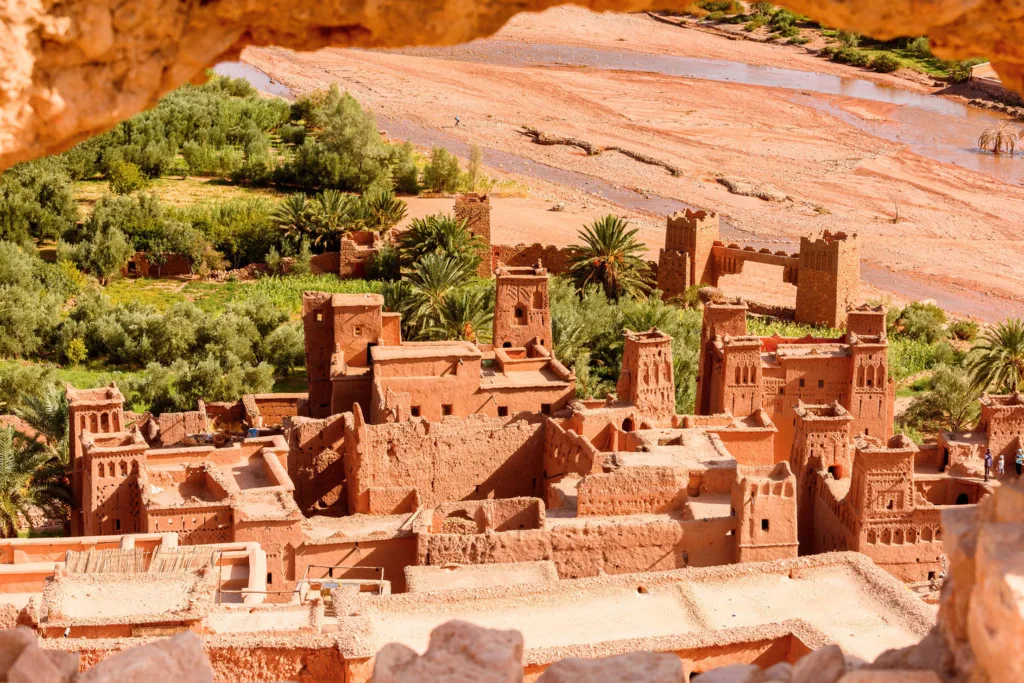
After breakfast in your Hotel/Riad, we drive along the lush Dades valley, making a stop in Kalaat M’Gouna, small beautiful town lies on the rose valley, which is famous for its rose cooperatives, where thousands of pounds of rose petals are harvested each year to be distilled into rose water and rose oil for use in cosmetics.
And then through the road of thousands Kasbahs to Ouarzazate, the gate of the Sahara desert and also called Hollywood of Africa, where you will have chance see the famous Kasbah of Taourirt in Ouarzazate city center. And visit the Atlas studio, the largest film studio in Morocco, where many films such as Game of thrones, Ben Hur and Cleopatra have been filmed.
The drive continues to Aït Ben Haddou Ksar, the UNESCO world heritage site since 1987, this little old town located in the former route of the caravan trade between the Sahara desert and Marrakech, the Ksar is now often used as a filming location for movies such as The Jewel of the Nile, The Mummy, Gladiator and Kingdom of Heaven.
Here you will be able to have walk and stroll in the Ksar and its Kasbahs where you will see the amazing traditional Berber architecture of the houses. After quiet stay we will resume our way to Marrakech crossing the high Atlas Mountains where you can enjoy the beautiful views of the Berber villages along the way, to the highest point (Tichka pass) that the road can reach with an altitude of 2260m, offering you stunning landscapes as far as the eye can admire. We will eventually arrive to Marrakech in the evening and check into your accommodation.
Overnight in Marrakech.
Day 9: Marrakech – Departure.

In the morning, after breakfast check out of your hotel and transfer to the airport for your departure flight.
